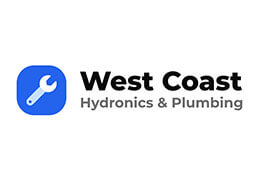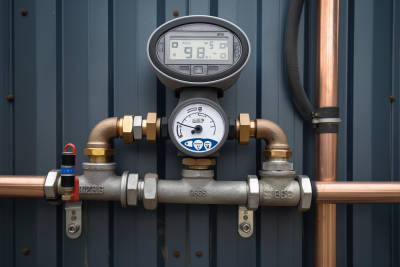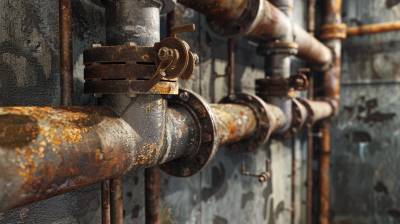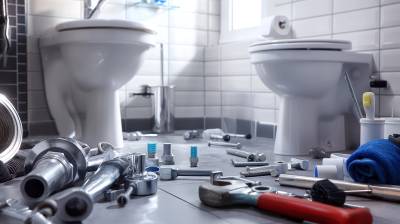As a homeowner, understanding the plumbing system inside your property can help you address minor problems promptly and help you communicate effectively with professional plumbers whenever major issues arise. One vital aspect of home plumbing most people don't know a lot about is the difference between S traps and P traps. So buckle up as we discuss all you need to know about "S trap vs P trap" – including the pros, cons, and which is better for different systems.
Understanding The Importance Of Plumbing Traps
Before we delve right into the S trap vs P trap comparison, it's worth understanding why these elements are crucial. Essentially, plumbing traps, including the S trap, P trap, and the drum trap, are designed to prevent the unpleasant odours from your sewage system from filling up your home. All plumbing traps, regardless of type or name, work by creating a water seal that blocks sewer gases from entering the living space. Right, with the basics out of the way – let's jump straight into the main business of the day: S traps vs P traps!
S Traps vs P Traps: The Basics
Although the two traps work similarly, they differ quite significantly in design and layout. Among plumbers, the "S trap vs P trap" question is usually common because these traps are installed differently and used in diverse situations.
Understanding the S Trap
The S trap got its name from its distinctive 'S' shape. This unique contour enables the trap to connect directly with the floor outlet. The S trap is widely utilized for fixtures that require floor drainage connections. It works by siphoning out water from the discharge pipe, thus creating a seal that blocks foul odours from getting back into the house.
Exploring the P Trap
On the other hand, the P trap features a 'U' shaped pipe that connects to a drain pipe running through the wall, hence the name P trap. The P trap is more commonplace in modern construction due to its efficiency and practicality, especially in applications where the drainage outlet is on the wall. This type of trap forms a seal using water that remains in the 'U' bend after you use a fixture such as a sink or shower.
S Trap vs P Trap: The Pros and Cons
To adequately answer the "S trap vs P trap" question, you need to consider the pros and cons of both types of traps.
Pros of an S Trap
- Compatible with floor-based plumbing systems, especially in older buildings.
- Relatively simple to install.
Cons of an S Trap
- The design could easily lead to siphoning, thus leading to the evaporation of the water seal that prevents sewer gases from entering your home.
- The S trap is not widely accepted in many plumbing codes and standards, making it less common in modern construction.
Pros of a P Trap
- The P trap design reduces the risk of water seal evaporation.
- This trap type is usually preferred and accepted in most current plumbing codes and standards.
Cons of a P Trap
- A P trap might not be suitable for houses with older plumbing systems that are designed for floor-based drainage.
- Improper installation of a P trap, such as placing it too far from the fixture, might increase vulnerability to blockages and leaks.
S Trap vs P Trap: Which is Better for Your Plumbing System?
In the battle of S trap vs P trap, your unique situation determines the champion. For a contemporary home with wall-based drainage outlets, a P trap would likely be the best bet. On the other hand, for older homes with floor drainage outlets, an S trap might serve you well. However, bear in mind that the self-siphoning nature of S traps, coupled with its general non-conformity to most current plumbing codes, may necessitate the intervention of a professional plumber if you must use an S trap.
Whether it's a P trap, S trap or even a drum trap, the essential thing is to ensure its proper installation and efficient functioning in your plumbing system. For most homeowners though, understanding the difference between "S trap vs P trap" can go a long way in simplifying and demystifying many plumbing mysteries, helping you maintain a more comfortable and healthier home.
Frequently Asked Questions About S-traps and P-traps
There is a lot to know when it comes to understanding plumbing basics, especially some of the more complex or technical aspects involving waste-water disposal system in our homes or offices. One such area is the different types of traps used in plumbing. In this FAQ guide, we'll be exploring all you need to know about the S-trap, P-trap, and Drum Trap.
1. What is a trap in plumbing?
A trap in plumbing is a device that keeps a small amount of liquid every time the fixtures is used. The trap prevents sewer gases from entering buildings or homes. Essentially, a trap forms part of the critical components of the plumbing system in a building. It can take several shapes which include S, P, drum among others.
2. What is an S-trap?
An S-trap is a type of trap used in plumbing that looks like an S shape. This type of trap is usually seen in plumbing installations where the waste pipe outlet is through the floor. The S-trap design allows the water to prevent sewer gases from entering the building. However, S-traps are not in use in modern plumbing as they are more likely to siphon dry even with regular use.
3. How does an S-trap work?
An S-trap works by maintaining a "trap seal" within the curve of the trap. After the fixture is used, water drains into the trap creating a water seal that blocks sewer gases from rising into the house. The water trapped in the curve would form a water seal and create a barrier between your home and sewer gases.
4. What is a P-trap?
A P-trap is another type of plumbing trap that is shaped like a letter "P" that is laid on its side. It's the type of trap you'll usually find under sinks, showers, and bathtubs. P-traps are more commonly used in today's plumbing systems because they are not self-siphoning and they maintain their water seal more effectively than S-traps.
5. How does a P-trap function?
The working mechanism of a P-trap is similar to that of the S-trap, in that it also uses water to create a seal that prevents sewer gases from entering the building. The main difference is the additional 90-degree fitting on the outlet side of the trap that prevents water from being siphoned out of the trap as the result of some flowing drain water.
6. What is a drum trap?
A drum trap is an older type of trap that served as a ground for solids. It is an obsolete plumbing tool once used to retain a minimal amount of water to keep sewer gases from creeping up into your home or office. However, they have been replaced by P-traps.
7. What's the difference between S-trap and P-trap?
The major difference between the two classes of traps is their shapes and the fact that S-traps are no longer accepted in modern plumbing codes because they have a tendency to siphon dry even under ordinary conditions. P-traps, on the other hand, are still in use due to their design that prevents water from being siphoned out, thus providing a more reliable barrier against sewer gases.
8. Why are drum traps not in use today?
Drum traps are not in use today because of their inefficient designs. They are hard to unfilled and don’t have enough space to cope with the fast flow of modern plumbing fixtures. They likely to become clogged and hard to clean. Therefore, P-traps are generally preferred.
9. Can S-traps be converted to P-traps?
Yes, S-Traps can be converted to P-Traps with a bit of plumbing work. This is generally done to meet modern plumbing codes and to minimize the risk of sewer gases and odors from entering a building.
After going through these frequently asked questions, you should now have a better understanding of S-Traps, P-Traps, and Drum Traps.
Summary
So, if you're trying to decide between S trap vs P trap, drum trap, each offers its own advantages. S traps are best used where there's no access to a wall or floor outlet, like in old buildings or mobile homes. P traps, on the other hand, are ideal if you are concerned with sewer gases because they are designed to maintain a water seal that blocks these gases. Finally, drum traps can be your go-to for avoiding clogs, as they can store a large amount of water and therefore, solids.
When comparing S trap vs P trap, drum trap, you'll want to consider the installation process as well. S traps are generally easier to install and replace. However, they can siphon dry with frequent use which defeats their purpose of preventing sewer gas from entering the home. P traps provide a more solid defense but can be a bit tricky to install. Then, the drum traps, while they protect against clogging, they are complex to clean and maintain.
Cost can also be a factor when deciding between S trap vs P trap, drum trap. P traps are usually less expensive than the S traps and drum traps. However, considering that S traps are easier to install and drum traps can prevent clogs, a few extra dollars might be a worthwhile investment. So, your final decision will depend on your specific plumbing needs, budget, and installation capabilities.
About West Coast Hydronics & Plumbing
West Coast Hydronics & Plumbing, located in Sacramento, CA, is your trusted source for top-quality hydronic heating and plumbing solutions. We pride ourselves on offering exceptional service and the latest in energy-efficient systems to both residential and commercial clients. Our experienced team works seamlessly to ensure optimal comfort and functionality for your home or business, while also keeping sustainability in mind. So, whether you're in need of a simple fixture repair or a complete hydronic system installed, West Coast Hydronics & Plumbing is always geared up to provide you with reliable, friendly and efficient service.








